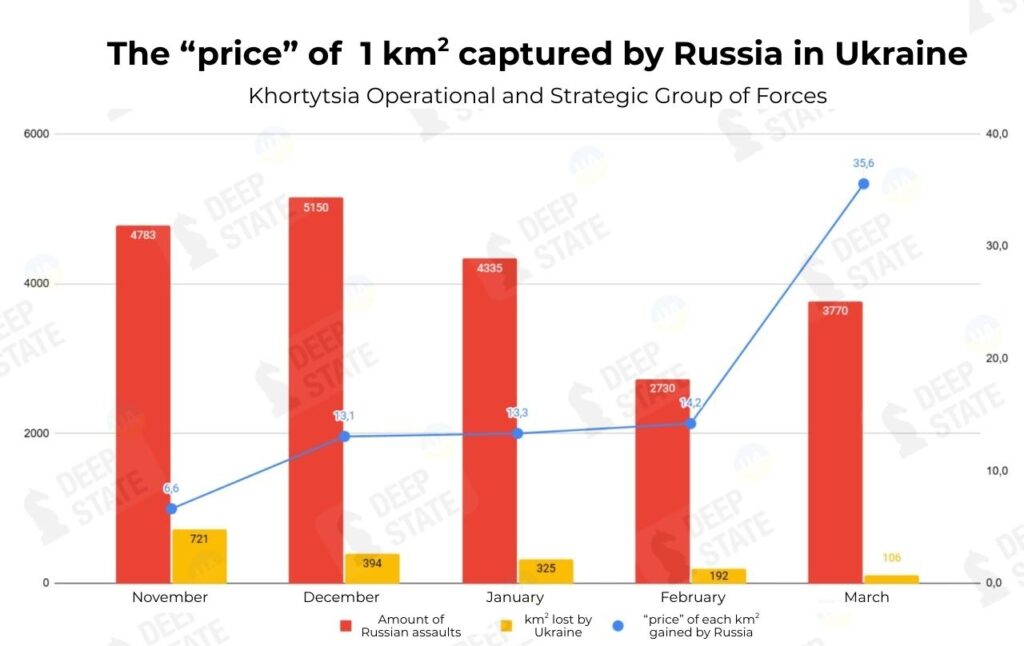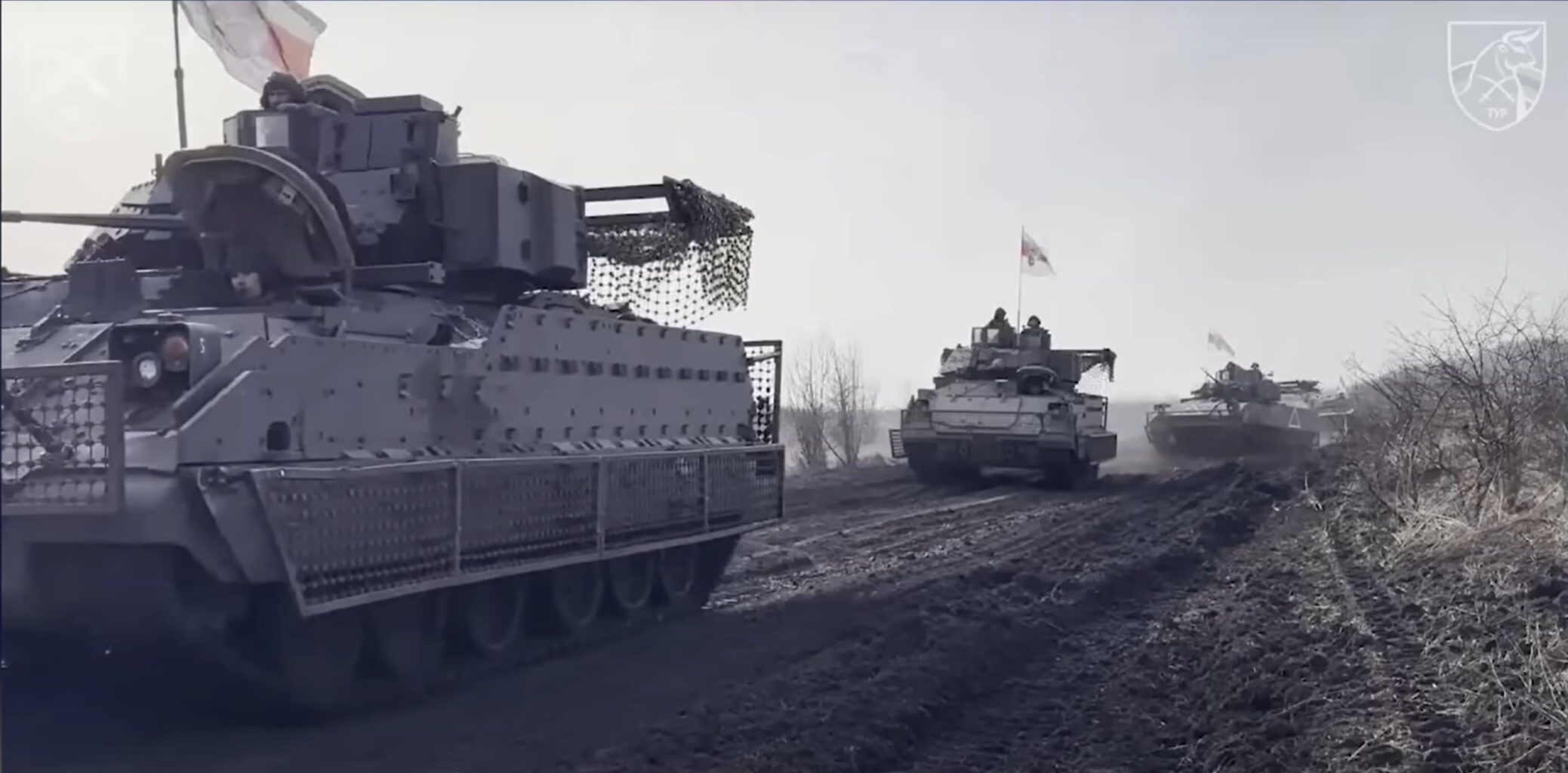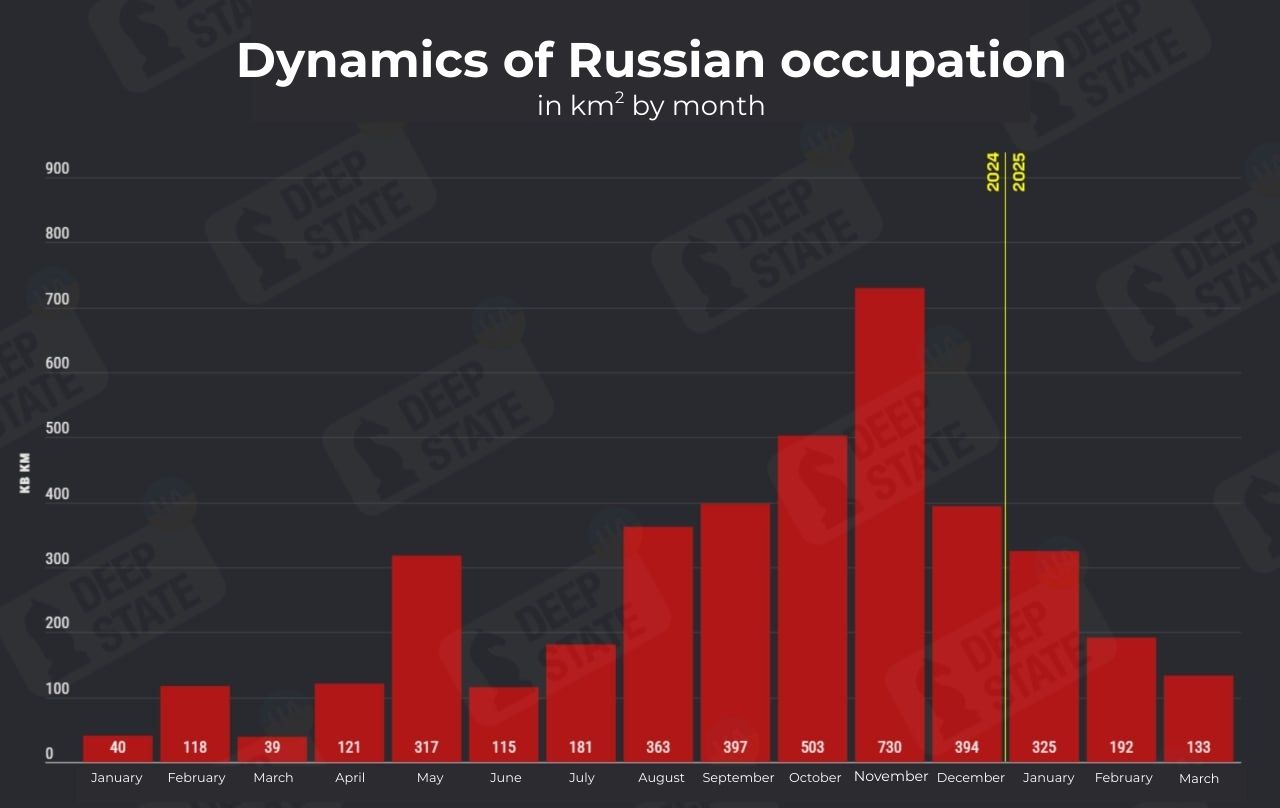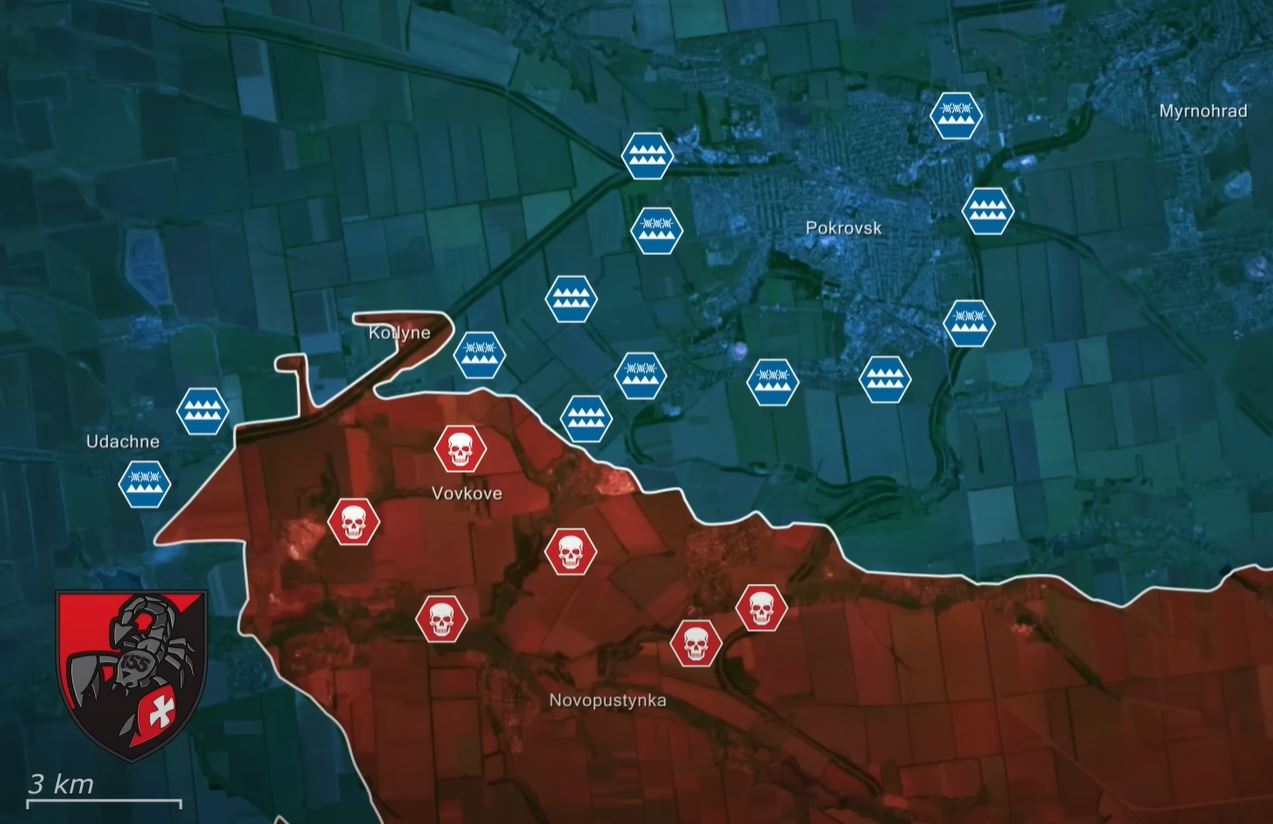Russian forces seized just 143 km2 of Ukrainian territory in March 2025, marking a dramatic decline in their offensive capabilities, according to British intelligence. This represents an average advance of less than 5 km2 per day, significantly down from the 700+ km2 captured in November 2024.
Despite continued assaults, particularly in central Donetsk oblast, Russia has failed to improve its operational position, the UK Ministry of Defense stated on X. Meanwhile, Ukrainian forces have launched tactical counter-attacks near Pokrovsk, successfully reversing some of Russia's recent territorial gains.
"The level of Russian ground attacks on several axes was reduced through much of March 2025," the British intelligence report notes. While attack intensity increased toward the end of the month, it "has not resulted in a higher rate of advance."
The UK MoD report corroborates a trend observed by the Ukrainian OSINT website DeepState, which put Russian gains in March at 133 km2 -- six times fewer than those made in November 2024.
DeepState, which maintains a map of frontline dynamics, calculated that in the Kharkiv, Luhansk, and Donetsk Oblasts, the "price" of Russia's capture of 1 km2 in March jumped to 35.6 assaults, up from 14.2 in February and just 7.1 in November 2024. DeepState connects this improved Ukrainian performance and relative stabilization of the frontline to the January 2025 appointment of Mykhailo Drapatyi as commander of the Khortytsia Operational and Strategic Group of Forces.

Drapatyi, Ukraine's youngest general, succeeded in stabilizing the Pokrovsk sector of the frontline, which had been under heavy assault since a Russian breakthrough one year ago. By targeting Russian logistics routes, rotating out newly formed brigades for rearmament while deploying veteran units, and enhancing fortifications around Pokrovsk, he effectively halted Russian advances and depleted their combat capabilities, transforming what had been months of relentless pressure into a stabilized defensive position that Russian forces have been unable to break through.
"We see positive dynamics not only in the statistics of lost territories but also in methods and approaches in general. However, we should not assume that the problems in the army have disappeared; there are still many of them, and their solution is a long process. The main thing is that this process began with personnel changes," DeepState commented.
Russia's offensive potential exhausting after year of heavy fighting
Military analysts have been reporting signs of Russia exhausting its offensive potential since early 2025. In January, NATO commander Christopher Cavoli stated that Russia lacks sufficient forces to make a significant breakthrough on the battlefield.
Similarly, in early March, Ukrainian units managed to halt the Russian advance near Pokrovsk and launch counterattacks as Moscow's forces showed signs of depletion. According to military analyst Denys Popovych, "The situation in the Pokrovsk direction has worsened for the Russian military. Ukrainian Forces have stopped the Russian advance and are counterattacking. The enemy is trying to restore their position, but so far, it has not been successful," he told Ukrainian media.
Commander Stanislav Bunatov of the 24th separate assault battalion Aidar confirmed that "Russian infantry on the Pokrovsk front is exhausted," though he warned that their reconnaissance, artillery, aviation, and strike drones continue operating around the clock.
The loss in Russian momentum comes amid Ukraine's withdrawal from Russia's Kursk Oblast, where Ukraine managed to make a surprise incursion in August 2024, and surprise assault on Belgorod.



